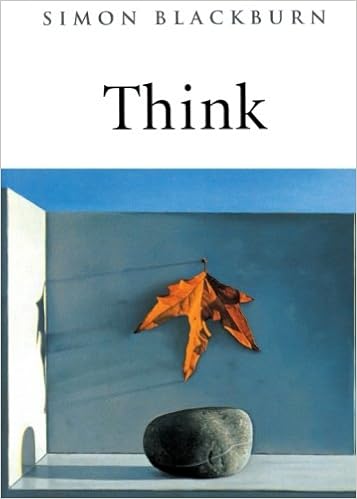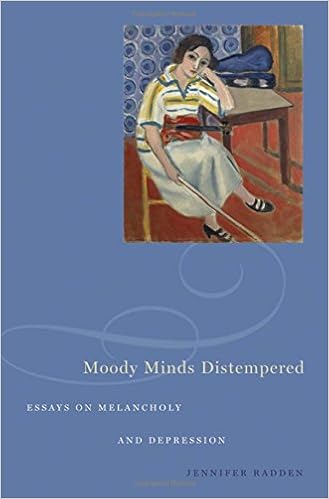Reconsiders the modern relevance of Schelling’s radical philosophical and non secular ecology.
The final 20 years have obvious a renaissance and reappraisal of Schelling’s awesome physique of philosophical paintings, relocating past explications and ancient research to start pondering with and during Schelling, exploring and constructing the basic matters at stake in his suggestion and their modern relevance. during this publication, Jason M. Wirth seeks to interact Schelling’s paintings in regards to the philosophical challenge of the connection of time and the mind's eye, calling this courting Schelling’s perform of the wild. concentrating on the questions of nature, artwork, philosophical faith (mythology and revelation), and historical past, Wirth argues that on the middle of Schelling’s paintings is a thorough philosophical and non secular ecology. He develops this subject not just via shut readings of Schelling’s texts, but in addition by way of bringing them into discussion with thinkers as varied as Deleuze, Nietzsche, Melville, Musil, and so on. The ebook additionally good points the 1st visual appeal in English translation of Schelling’s well-known letter to Eschenmayer in regards to the Freedom essay.
“By pondering with and during Schelling on modern matters, Wirth is on the middle of the renaissance underway of Schelling’s philosophy … In his magisterial paintings, Schelling’s perform of the Wild, Wirth brings this renaissance to a better flowering by means of taking Schelling’s pondering somewhere else, even past the place it will probably have long gone had it been the beneficiary of a century of feedback. during this recognize, Wirth’s ebook advances our philosophical heritage.” — Notre Dame Philosophical Reviews
Quick preview of Schelling's Practice of the Wild: Time, Art, Imagination (SUNY series in Contemporary Continental Philosophy) PDF
Best Philosophy books
'One needs to be more desirable to mankind in strength, in loftiness of soul—in contempt’In those devastating works, Nietzsche deals a sustained and infrequently vitriolic assault at the morality and the ideals of his time, specifically these of Hegel, Kant and Schopenhaur. Twilight of the Idols is a ‘grand statement of warfare’ on cause, psychology and theology that mixes hugely charged own assaults on his contemporaries with a lightning journey of his personal philosophy.
Think: A Compelling Introduction to Philosophy
Right here ultimately is a coherent, unintimidating advent to the hard and interesting panorama of Western philosophy. Written expressly for "anyone who believes there are gigantic questions available in the market, yet doesn't know the way toapproach them," imagine presents a legitimate framework for exploring the main uncomplicated subject matters of philosophy, and for figuring out how significant philosophers have tackled the questions that experience pressed themselves so much forcefully on human realization.
Moody Minds Distempered: Essays on Melancholy and Depression
In Moody Minds Distempered thinker Jennifer Radden assembles numerous a long time of her examine on depression and melancholy. The chapters are ordered into 3 different types: these approximately highbrow and scientific background of depression and melancholy; those who emphasize points of the ethical, mental and clinical positive aspects of those strategies; and at last, those who discover the unhappy and frightened temper states lengthy linked to depression and depressive subjectivity.
Thought and Reality (Lines of Thought)
During this brief, lucid, wealthy e-book Michael Dummett units out his perspectives approximately a few of the private questions in philosophy. the basic query of metaphysics is: what does fact encompass? to reply to this, Dummett holds, it is vital to assert what varieties of truth receive, and what constitutes their retaining stable.
- Philosophy and Living
- Cicero: On Moral Ends (Cambridge Texts in the History of Philosophy)
- Concrete Reveries: Consciousness and the City
- The Transhumanist Wager
- Martin Heidegger: Key Concepts
Extra info for Schelling's Practice of the Wild: Time, Art, Imagination (SUNY series in Contemporary Continental Philosophy)
To like paintings isn't really in basic terms to confirm what has been stated. it's not the idolatry of the acknowledged, yet quite devotion to the asserting. “But the true global isn't any longer the residing be aware, the conversing of God itself, yet fairly simply the spoken—the coagulated (geronnen)—word [Aber die reale Welt ist nicht mehr das lebendige Wort, das Sprechen Gottes selbst, sondern nur das gesprochene—geronnene—Wort]” (I/5, 484). Gerinnen is to coagulate, clot, or curdle (like milk into cheese). The clotted observe of paintings isn't the expressive talking of artwork. The plastic arts in themselves, too, are consequently in basic terms “the lifeless observe [das gestorbene Wort]” and the extra that this talking is ready to die to itself, the extra elegant the art is; in song this is often perceptible because the second of sonority (Klang), the sounding out of items, the univocity of being, “that power that has entered into demise [das in den Tod eingegangene Lebendige]” (I/5, 484). 26 consequently, language itself is “vital, expressive, and limitless affirmation,” “the optimum image of chaos” (I/5, 484), the vowels that, as we see within the Freedom essay, let us pay attention the silent consonants of nature (I/7, 364). Karl Schelling tells us that his father wrote the subsequent be aware within the margins of the Philosophy of artwork lectures: “Sprache überhaupt = Kunst trieb des Menschen: Language total = the human force for paintings” (I/5, 486). That we communicate in any respect is already on the center of the human force to creativity, of our wish to perform the expressivity of nature itself. artwork, talking in any respect, is already as a result on the middle of what Schelling understood by way of that the majority poorly understood of phrases, reli gion. during this feel, the philosophy of artwork is not directly the start of what Schelling will later name confident philosophy. As Schelling recalled 4 a long time later in 1842 within the 10th and ultimate lecture of his Histori cal-critical advent to the Philosophy of Mythology: 158 SCHELLING’S perform OF THE WILD [t]he Philosophy of Mythology additionally types an quintessential origin for the Philosophy of paintings, simply because it has an important relation to the Philosophy of historical past. For it is going to be crucial, even considered one of its first initiatives, for this Philosophy of artwork to challenge itself with the 1st gadgets of inventive and poetic displays. the following will probably be unavoidable to require, because it have been, a poesy initially previous all plastic and compositional artwork, specifically, one initially inventing and generating the uncooked fabric [Stoff]. (II/1, 241)27 What was once the primordial type of human creativity from which paintings as such is spinoff? a trip to the Lascaux or Chauvet caves, or a learn of the petroglyphs that flourished in areas as distant from one another because the Americas, Australia, and Tanzania, provide testimony to Schelling’s solution: mythology! within the artwork lectures, mythology “is the mandatory situation and the top topic [der erste Stoff] of all paintings” (§38, I/5, 405). inventive photographs emerge from the now forgotten strength of mythological pictures. artistic endeavors and the gods—for “these genuine, dwelling, and present rules are the gods [diese realen, lebendigen und existierenden Ideen sind die Götter]” (I/5, 370)—are now not tokens for anything beside themselves.





